Altcoin
Ethereum ETF Launch Doesn’t Assure Solana ETF Approval, Here’s Why
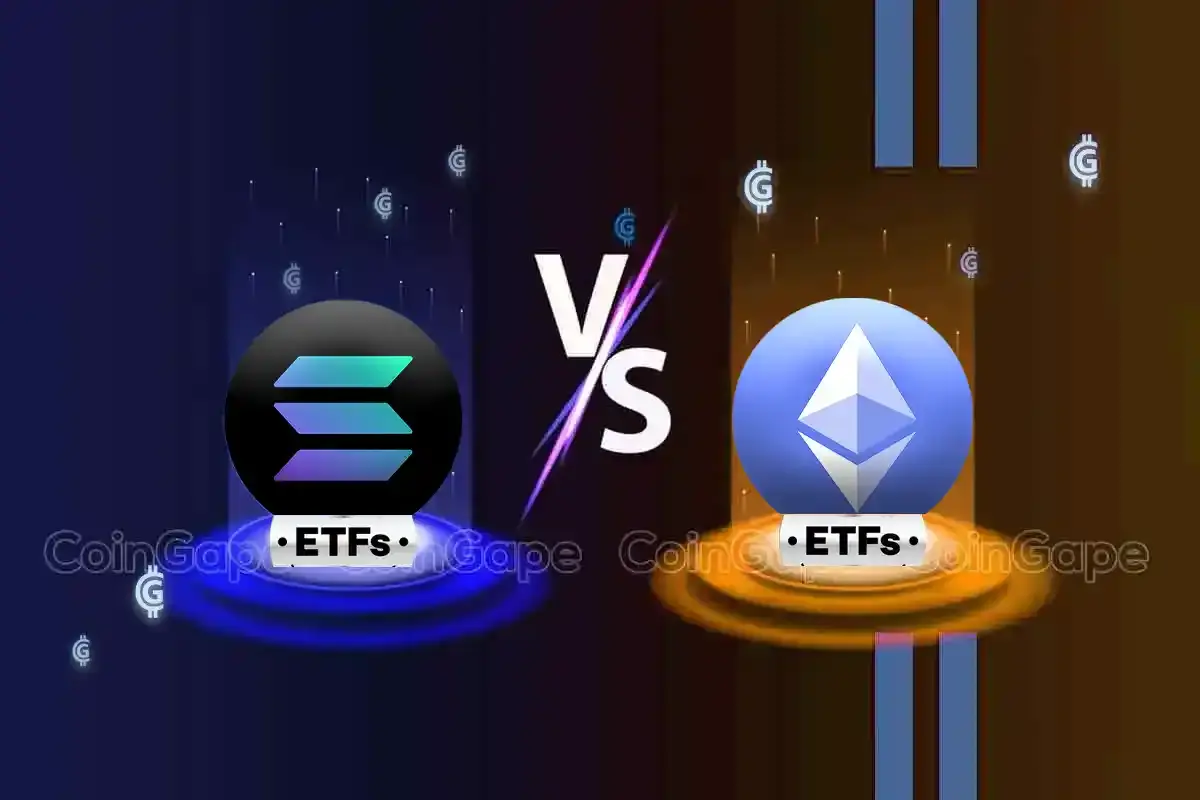
The approval and upcoming launch of Spot Ethereum ETFs have generated excitement in the crypto community. However, experts warned that this doesn’t necessarily mean similar approval for other cryptocurrencies like Solana (SOL). Paul Brody, EY’s Global Blockchain Leader, recently discussed the implications of these developments.
Will Ethereum ETF Launch Lead Other Crypto ETF Approvals?
Brody expressed optimism about the launch of Spot Ethereum ETF. “I’m expecting so many good things. This is the beginning of a relatively long journey,” he said in an interview with CNBC. Moreover, he emphasized that this is an early stage of global regulatory convergence in the crypto market.
However, Brody highlighted that regulatory acceptance of Ethereum doesn’t automatically extend to other cryptocurrencies. For instance, the fate of Solana ETF applications remains uncertain. Last month, VanEck became the first to file an application for a Spot Solana ETF in the U.S. Furthermore, this month, CBOE filed a request with the SEC to list ETFs tied to the cryptocurrency.
Despite these efforts, Brody noted significant differences between Ethereum and Solana that could affect regulatory decisions. “Bitcoin and Ethereum are much more decentralized than the Solana ecosystem,” Brody explained. In addition, he pointed out that these differences in decentralization, technical requirements, and market liquidity could lead to varied responses from regulators.
“There are really substantial differences between these different networks,” he added. Hence, he suggested that the SEC might not respond to Solana in the same way it did to Bitcoin and Ethereum. Furthermore, Brody also discussed the broader regulatory landscape, comparing the U.S. to Europe.
Europe’s regulatory structure, known as the Markets in Crypto-Assets (MiCA) framework, provides a comprehensive legal model for crypto transactions. This contrasts with the more fragmented approach in the United States. In the U.S., the lack of a general framework for crypto assets makes regulatory outcomes less predictable. This could also hinder the Solana ETF approval despite the Ether ETF greenlight.
Also Read: Breaking: 21Shares Files Updated Spot Ethereum ETF S-1, Reveals Sponsor Fee
Outlook For The Broader Market
Regarding the growing institutional interest in digital assets, Brody mentioned EY Parthenon’s research. The research indicates that institutional investors are increasingly allocating to digital assets and crypto-related products. This trend, he explained, reflects a move towards mainstream acceptance of cryptocurrencies.
In Q2, Spot Bitcoin ETFs saw 79% of institutions expanding their ETF holdings. A similar trend is expected for Spot Ethereum ETF. Moreover, Brody stated, “There’s nothing about crypto assets or tokenized assets that is a fad,” reinforcing the idea that these investments are becoming a staple in diversified portfolios. However, despite the positive developments, Brody urged caution.
He noted that increased investment in crypto does not guarantee universal success for all digital assets. He drew an analogy to the precious metals market, where gold dominates due to its established value and market size. “Bitcoin is digital gold,” Brody said, predicting that it will continue to dominate the crypto market in a manner similar to gold’s dominance among precious metals.
Ethereum, too, stands out as a dominant platform for tokenized assets and smart contracts. Brody believes that Ethereum will capture the majority of investments in tokenized real-world assets. “Ethereum will soak up more than 90% of all these tokenized real-world assets,” he stated. He referenced the interest from companies like BlackRock in deploying such assets on Ethereum’s blockchain.
Additionally, Brody also commented on the barriers to growth and adoption of crypto. He cited regulatory clarity and trusted partners as critical issues. He pointed to recent legislative efforts in the U.S., such as the Financial Innovation and Technology for the 21st Century Act, which received bipartisan support.
This move, he argued, signals a positive direction for the industry. “Cryptocurrency and blockchain in general remain a bipartisan political issue,” Brody observed. The expert also suggested that bipartisan support is crucial for the continued advancement of crypto regulations.
Also Read: Is Ethereum ETF Approval “Sell The News” Event Like Bitcoin ETF?
The presented content may include the personal opinion of the author and is subject to market condition. Do your market research before investing in cryptocurrencies. The author or the publication does not hold any responsibility for your personal financial loss.
Altcoin
Sonic Surges to $1 Billion TVL in 66 Days Amid DeFi Market Slump

The crypto market in 2025 is facing intense turbulence. The capitalization of once-hot trends like meme coins has plummeted. Capital has flowed out of decentralized finance (DeFi) protocols, driving DeFi’s total value locked (TVL) down from $120 billion to around $87 billion.
In this context, Sonic stands out. It has consistently hit new TVL highs, reaching $1 billion in April after growing nearly 40 times since the beginning of the year. So, what makes Sonic a bright spot amid a stormy market?
Investors Are Pouring Capital into Sonic
Sonic has made its mark with a rapid TVL growth rate, far outpacing better-known blockchains. According to DefiLlama, Sonic reached $1 billion in TVL within 66 days. In comparison, Sui took 505 days, and Aptos needed 709.
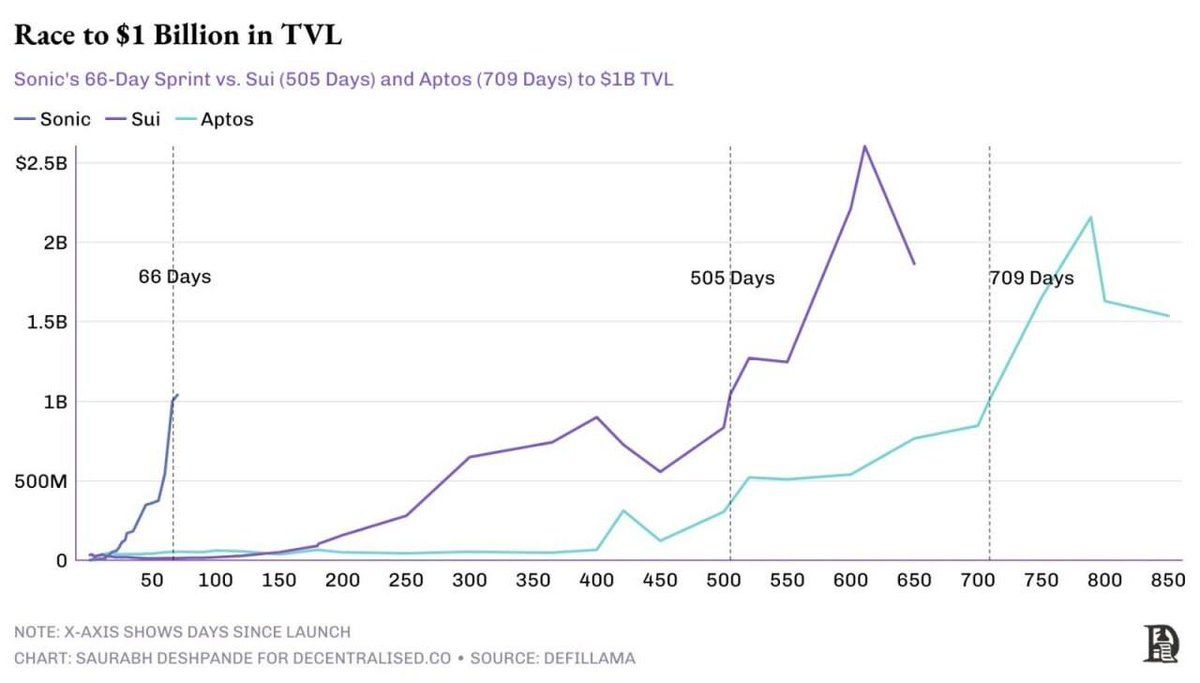
This achievement reflects strong capital inflows into the Sonic ecosystem despite the broader DeFi trend of capital withdrawal. Data from Artemis supports this, ranking Sonic as the second-highest netflow protocol this year—trailing only Base, a blockchain backed by Coinbase.
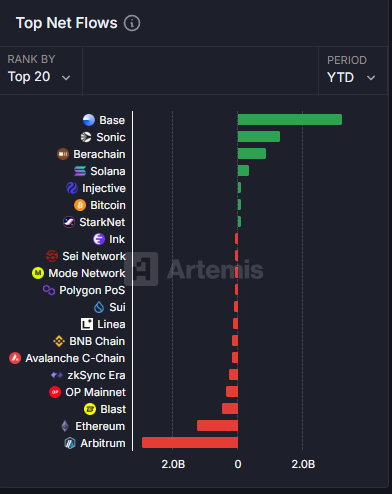
The growth goes beyond TVL numbers. Sonic’s ecosystem is attracting various projects, including derivatives exchanges like Aark Digital and Shadow Exchange and protocols such as Snake Finance, Equalizer0x, and Beets. These projects still have small TVLs, but they have the potential to draw new users and capital, fueling Sonic’s momentum.
However, the question remains: Can this capital inflow remain sustainable while the market fluctuates?
Andre Cronje on Sonic’s Potential and Strengths
Andre Cronje, the developer behind Sonic, shared his ambition in an interview to push this blockchain beyond its competitors.
“Sonic has sub-200 millisecond finality, faster than human responsiveness,” Andre Cronje said.
According to Cronje, Sonic isn’t just about speed. The platform also focuses on improving both user and developer experience. He explained that 90% of transaction fees go to dApp, not to validators, creating incentives for developers to build.
Unlike other blockchains, such as Ethereum, which are limited by long block times, Sonic leverages an enhanced virtual machine that theoretically processes up to 400,000 transactions per second. Cronje acknowledges, however, that current demand has yet to push the network to its full capacity. Still, these technical advantages make Sonic a compelling option for developers seeking more user-friendly dApps.
He also revealed new features on Sonic that have the potential to attract users.
“If your first touch point with a user is to download this wallet and then buy this token on an exchange, you’ve lost 99.9% of your users. They’ll use their Google off-email password, fingerprint, face, whatever it is, to access the dApp and interact with it, and they’ll never need to know about Sonic or token,” Andre Cronje revealed.
Risks and Challenges Ahead
Despite reaching impressive milestones, Sonic is not immune to risk. The price of its token, S, has declined significantly from its peak. According to BeInCrypto, it has dropped around 20% in the past month—from $0.60 down to $0.47—mirroring the broader market’s volatility.

Furthermore, Grayscale recently removed Sonic from its April asset consideration list. This decision reflects a shift in the fund’s expectations and raises concerns about Sonic’s ability to maintain its TVL should investor sentiment deteriorate.
Sonic also faces fierce competition from other high-performance chains like Solana and Base. Although Sonic holds a clear advantage in speed, long-term user adoption will depend on whether its ecosystem can deliver real value, not just high TVL figures.
Disclaimer
In adherence to the Trust Project guidelines, BeInCrypto is committed to unbiased, transparent reporting. This news article aims to provide accurate, timely information. However, readers are advised to verify facts independently and consult with a professional before making any decisions based on this content. Please note that our Terms and Conditions, Privacy Policy, and Disclaimers have been updated.
Altcoin
6.96 Billion Dogecoin In 24 Hours As DOGE Price Adds 1%
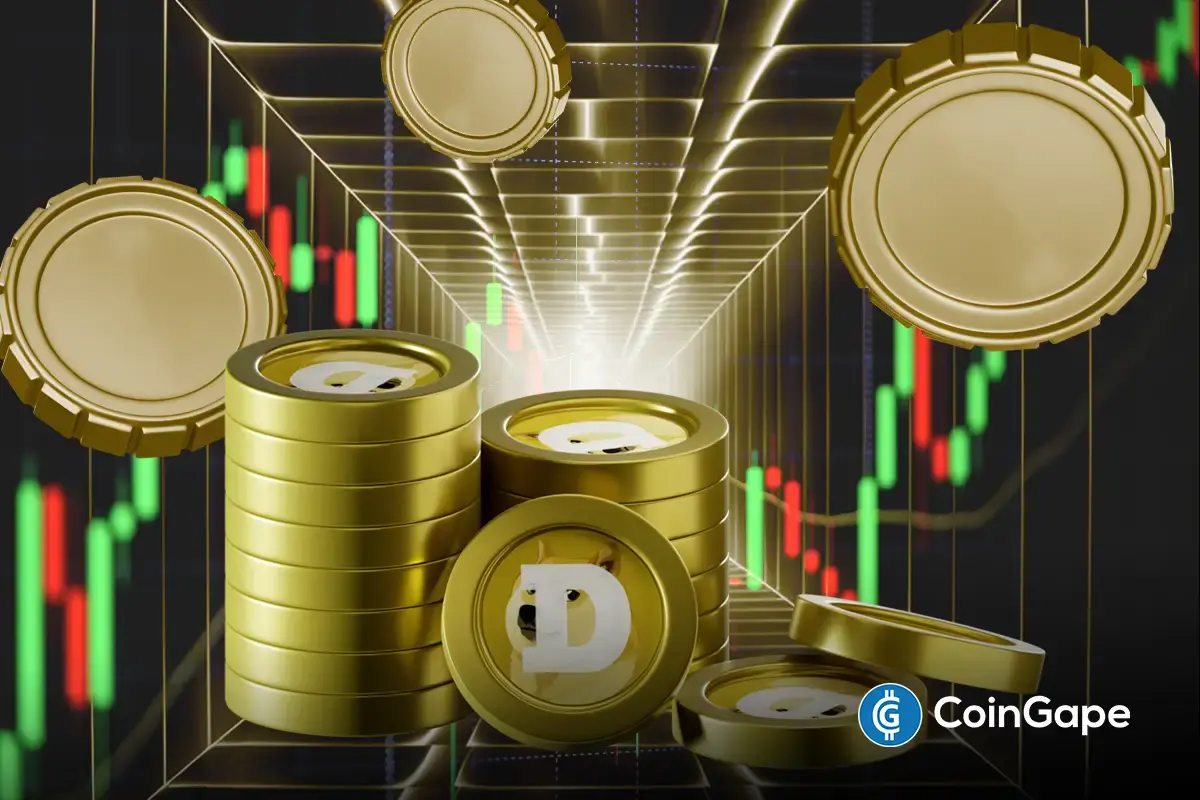
The leading meme coin Dogecoin has surged nearly 1% today, defying the broader market downturn momentum, with 6.96 billion coins traded over the last 24 hours. However, although the number seems big, it appears that the ongoing DOGE price surge is less likely to be sustained ahead. Despite that, some of the recent market trends hint that the meme coin may gain more exposure in the market due to soaring institutional interest.
Dogecoin price has mitigated some of its recent losses and traded at $0.157. Notably, it comes as the digital assets space stayed in the red, with the global crypto market losing 0.25% to $2.58 trillion. Ethereum was one of the top laggards among the top 10 coins, losing nearly 3% over the last 24 hours.
However, despite the recent gains, DOGE price has lost more than 6% in the weekly chart, while touching a 24-hour high and low of $0.158 and $0.1494. Besides, a total of 6.96 billion tokens were traded in the last 24 hours, totaling $1.09 billion.
Despite that, the one-day trading volume was down more than 45%, suggesting a volatile period ahead. Besides, CoinGlass data showed that DOGE Futures Open Interest fell 1% to $1.43 billion, reflecting the still gloomy sentiment hovering in the market.
For context, if high prices are not being supported by soaring trading volumes, it signals a concerning trend for the asset. This disparity can be a warning sign that the uptrend is weakening or a reversal is imminent.
Having said that, Dogecoin’s current low volume indicates a lack of broad market support, leaving the price vulnerable to a decline. With fewer traders actively buying, the top meme coin may be due for a correction.
Recent Trends Suggests Otherwise: Dogecoin (DOGE) Price To Rally?
One of the most recent positive developments on the meme coin is the 21Shares filing for DOGE ETF with the US SEC. The asset manager has revealed this significant step towards launching the investment instrument by filing the S-1 form with the US SEC on April 9.
Meanwhile, this move makes 21Shares the third company, after Grayscale and Bitwise, to seek approval for a DOGE ETF. The next step involves filing the 19b-4 form, which will officially start the approval process.
If approved, the ETF would provide investors with a new way to gain exposure to Dogecoin, potentially increasing its mainstream acceptance and market accessibility. Besides, 21Shares has also planned to launch DOGE ETP in Europe through a partnership with the House of Doge.
However, despite these bullish developments, investors should exercise due diligence before entering the market in this volatile scenario. For context, a recent Dogecoin price prediction indicates that the crypto might hover near the $0.1499 mark through April.
Having said that, it appears that the crypto might hover near the flatline in the coming days unless any major catalyst boosts the market sentiment further.
Disclaimer: The presented content may include the personal opinion of the author and is subject to market condition. Do your market research before investing in cryptocurrencies. The author or the publication does not hold any responsibility for your personal financial loss.
Altcoin
Why Pi Network Price Should Hit $10, Or Its Over for Pi Coin
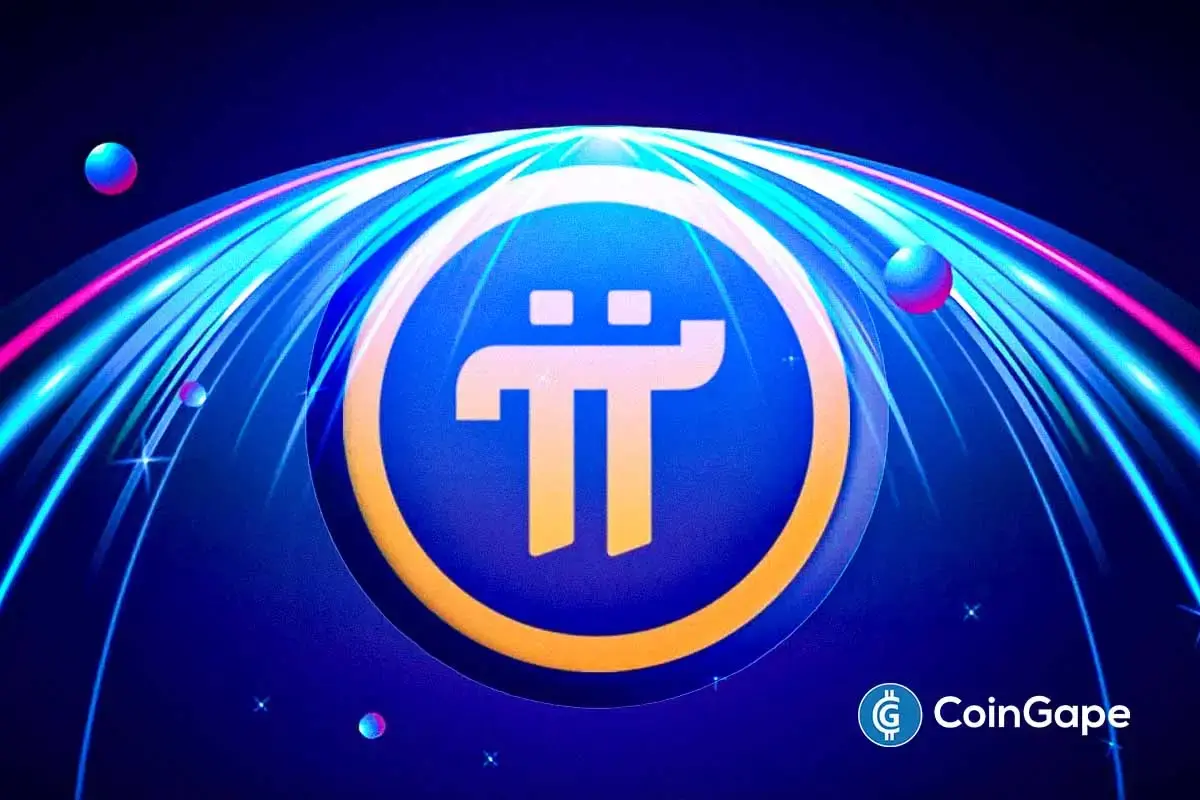
After a steep fall to $0.40 earlier this week, the Pi Network price bounced back to $0.60 levels, with its market cap above $4.1 billion. However, on-chain data shows that investors’ interest in the Pi Coin is waning quickly, with daily trading volumes dropping another 44% to $158 million. Analysts point out that the increasing supply of PI tokens at the exchanges can further dampen the upside and could put the ecosystem growth in the shadows.
Why Is Pi Network Investor Sentiment Down
Pi Network community member Edycabas recently shared his take on the collapse of transaction activity on the blockchain. He noted that the Pi blockchain is underwhelming, reportedly processing less than one transaction per second, despite years of promotion suggesting thousands of transactions per block during its Open Mainnet phase.


Responding to this, another community member, Dr Altcoin, noted that the blockchain itself remains operationally robust, boasting a 99.5% transaction success rate and averaging 20 transactions per block. “The real issue lies in transparency concerns surrounding the co-founders, which continue to deter major investors and centralized exchanges (CEXs),” he said.
Besides, Dr Altcoin also shared aspirations for the Pi Network price to reach a minimum token value of $10, which, as per the analyst, would significantly boost engagement with decentralized applications (DApps) and broader adoption. Dr Altcoin has also previously suggested for Pi token burns to boost the Pi Coin price higher.
Pi Coin Core Team Lacks Transparency
Dr. Altcoin has also questioned the Pi Network co-founders’ reluctance to engage publicly, urging them to address the community and investors. “Why do the co-founders avoid interviews?” Dr. Altcoin asked, adding that the “Pi Community has kept this project alive for years, and it deserves greater recognition”.
Dr. Altcoin stressed that co-founders Nicolas Kokkalis and Chengdiao Fan must step up to showcase the project’s potential to prevent the token from declining further, warning of a possible Pi Coin price dip below $0.30 in the coming week.
Crypto analyst Dr. Altcoin has issued a statement predicting significant activity on centralized exchanges (CEXs) as unlocked Pi tokens flood the market. Starting next week, an average of 134 million Pi tokens will reportedly enter circulation monthly.
Disclaimer: The presented content may include the personal opinion of the author and is subject to market condition. Do your market research before investing in cryptocurrencies. The author or the publication does not hold any responsibility for your personal financial loss.
-

 Market24 hours ago
Market24 hours ago3 Bullish Altcoins Surging After Trump’s Tariff Pause
-

 Market11 hours ago
Market11 hours agoXRP Price Ready to Run? Bulls Eyes Fresh Gains Amid Bullish Setup
-

 Market21 hours ago
Market21 hours agoADA Price Surge Signals a Potential Breakout
-

 Bitcoin24 hours ago
Bitcoin24 hours agoThis is Why Hoskinson Thinks Bitcoin Will Hit $250,000 in 2025
-

 Market23 hours ago
Market23 hours agoHedera (HBAR) Jumps 14%—More Gains Ahead?
-

 Altcoin13 hours ago
Altcoin13 hours agoXRP Price Risks 40% Drop to $1.20 If It Doesn’t Regain This Level
-

 Bitcoin22 hours ago
Bitcoin22 hours agoBitcoin Holders are More Profitable Than Ethereum Since 2023
-

 Market20 hours ago
Market20 hours agoEthereum Price Climbs, But Key Indicators Still Flash Bearish


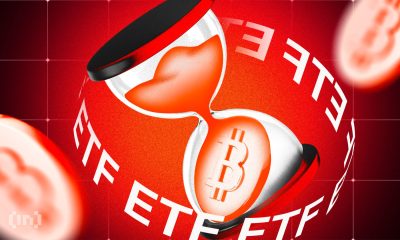

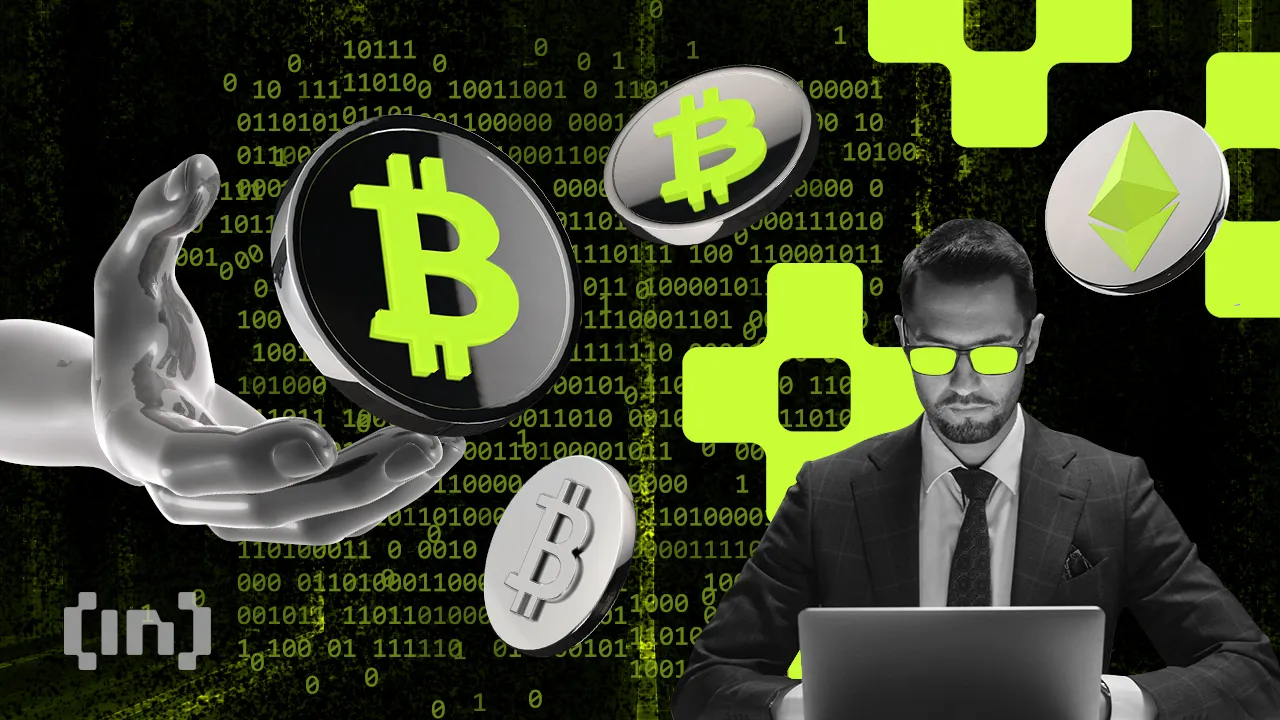
















✓ Share: